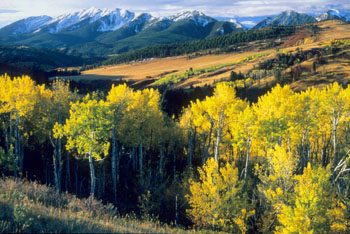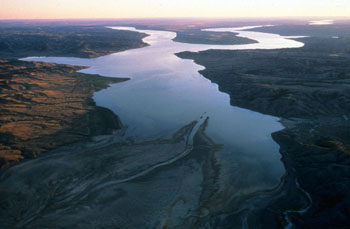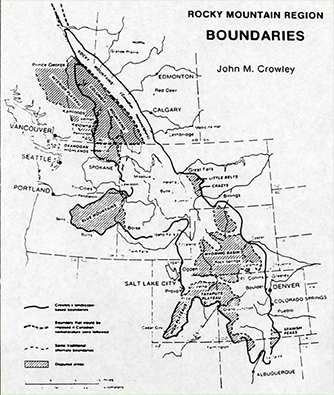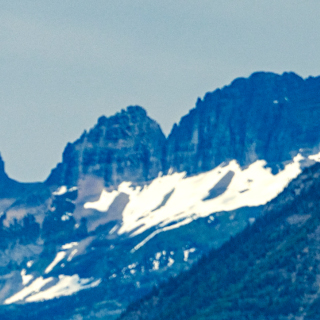The Region
There has always been a strong sense among Montanans that Montana, while large in size geographically, is actually a small part of something much bigger. In this part of the country, it is not difficult to see and feel the expansiveness of the place. Across the region’s boundless horizons, the sky appears to be very “big.” This is “Big Sky Country” – “tall, wide, and handsome” as journalist-historian Joseph Kinsey Howard put it in his seminal book published in 1943.
More than anything else, the Rocky Mountains is a region defined by mountains that stretch north and south along the continental divide, which is the spine of North America. There isn’t a single well-defined mountain range running the full length of the region, but a system of large and small ranges and sub-ranges separated by a multiplicity of valleys and distinct watersheds.
The region’s tall and wide landscapes span the U.S.-Canada border and the region’s cross-border area is sometimes referred to as North America’s “Crown of the Continent.” At the center of this Crown is the world’s first international peace park – Glacier-Waterton Lakes International Peace Park. In this Crown area the continent divides east and west, and also, a little north and south.
Many of North America’s major rivers have their beginnings in the high country of the Rockies, making the region one of the world’s most important “headwaters.” These include the Missouri, Platte, Arkansas, and Rio Grande, that all eventually flow into the Gulf of Mexico. They also include the Colorado, Snake, Columbia, and variety of streams flowing west from the Rockies across British Columbia and into the Pacific Ocean. Also included are the Peace, Athabasca, and Saskatchewan Rivers which flow from the Rockies into the Hudson Bay and northern lake systems of western Canada.

Photo courtest of Rick and Susie Graetz

Photo courtest of Rick and Susie Graetz
These river systems are monumental in scale and carry some of the world’s freshest waters. As these waters descend to lower elevations and valleys they sustain plants, animals, and people throughout the entire western and middle portions of North America. The region’s rugged terrain, waters, and diverse forests and grasslands make the Rockies an amazing ecological region with diverse habitat that support an incredible array of wildlife and fisheries.
The southern reaches of the Rocky Mountain West extend through Colorado and into New Mexico. And the region’s northern reaches stretch into British Columbia’s northern border area with the Yukon Territory. The mountains are centered over B.C.’s border with Alberta and Montana shares a border with both these Canadian provinces, as well as Saskatchewan. As the crow flies, it’s roughly 900 miles from Missoula, Montana, to Santa Fe, New Mexico and roughly 1,000 miles from Missoula north and west, up the Rockies to the Yukon Territory.
 A prominent feature of the Rocky Mountain West is the presence of many national parks on both sides of the border. Perhaps most notable among these are
A prominent feature of the Rocky Mountain West is the presence of many national parks on both sides of the border. Perhaps most notable among these areYellowstone, Rocky Mountain, and Glacier National Parks in the U.S. and Banff and Jasper Parks in Canada. There are many other smaller provincial and state parks amongst these. Because of their special qualities and beauty, these parks are “magnets” attracting millions of visitors to the region each year.
The region also has many other types of public lands, including wilderness and wildland areas, forest lands and reserves, and vast grasslands. This abundance of public lands has served to retain much of the region’s natural vegetation and defining landscapes, as well as large wildlife populations. Many visitors to these lands can take solace in that they share in their ownership and care.
As the world becomes smaller and more inter-connected, regions become bigger, oftentimes extending across national borders. Montana shares a very long border with our friends and neighbors in Canada. And, for many Montanans, their entrée into global society comes from simply driving across the border to nearby communities in Canada. Longstanding cross-border relations are imbedded into how the region operates and its sense of identity.
The Rocky Mountain West as a region and a place is not an artificial contrivance or simply the product of academic thinking. It is real and something experienced and sensed by almost anyone – residents and visitors alike – traveling about the region. And, while expansive, it is common ground to all of its residents who have made it their home.
